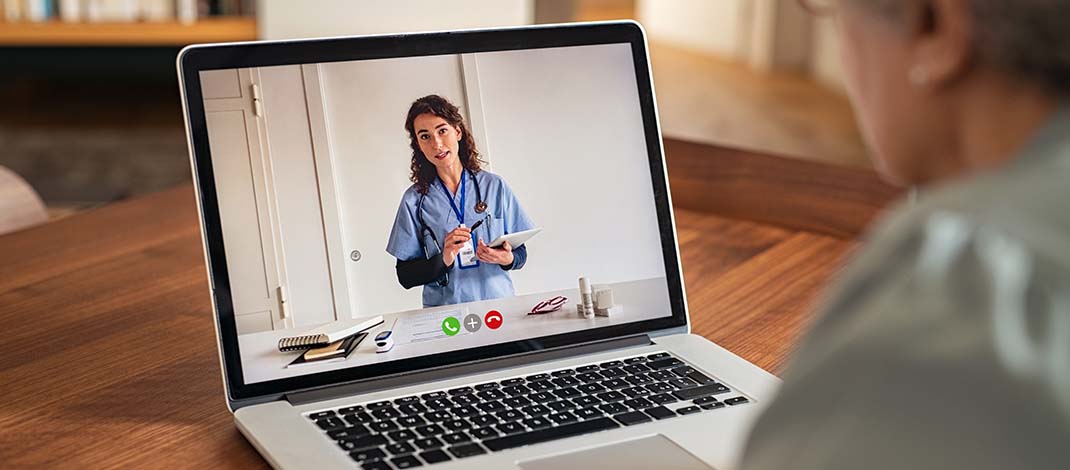Survey of consumers shows that they don’t prefer telehealth because of limits on services
By Deborah Jeanne Sergeant
Early in the pandemic, telehealth offered a way for providers to “meet” with quarantined patients and offer care. Once health insurance companies approved telehealth visits as comparable for reimbursement as in-person visits, telehealth took off.
Providers ramped up their tech capabilities and savvy and soon they were remotely visiting with patients for a variety of issues.
Providers and patients appeared to initially embrace telehealth. From 2019 to 2022, use of telehealth jumped from 7% of patients to 36%.
But use does not always equate to satisfaction. A J.D. Powers survey of 4,700 consumers showed that they did not prefer telehealth because of limits on services (24%) and cost, confusion about technology, and poor provider information (15%). But some respondents lauded its convenience (57%), quicker access to care (47%) and safety (36%).
Physician Corliss Varnum, who retired in March from Port City Family Medicine in Oswego, sees potential for telehealth, “but I don’t think it’s ready for prime time. Say you’re making a visit for a blood pressure check-up. I can’t listen to your heart over the computer or listen to your lungs. I can only say that she looks like she’s breathing OK.”
He added that most people do not own a blood pressure cuff or thermometer at home or if they do, they cannot find it or may not operate it correctly.
“You can’t see a rash as good as inperson,” he said.
Technology issues can also hamper use of telehealth.
“Most people who aren’t young don’t have a computer and don’t want a computer,” Varnum said. “Many times, it’s telehealth by phone. It’s got a lot of bugs in it, though a lot of people think it’s great.”
He sees potential for use by people who cannot readily come to a doctor’s appointment because of disabilities, bad weather or lack of childcare. But he does not view telehealth as a replacement for face-to-face visits.
“It does give an option to talk with people and see how they’re holding up and how they’re doing with their medication,” Varnum said. “You can also see their environment to some degree.”
The rise in telehealth during the pandemic has caused Le Moyne College to add telehealth to its healthcare curriculum.
“It’s definitely a skill our students need to have,” said Mary Springston, clinical associate professor and director of Clinical Advancement Science Center at the school.
She said that most students are adept at using technology for telehealth, but the struggle is helping patients feel comfortable.
“A physical exam is a challenge with telehealth,” Springston said. “Sometimes, you have to build trust with the patient that this is going to help them and work for them. Some people love it, as they don’t have to spend an hour in the waiting room or traveling a great distance.”
She believes that the greatest potential in telehealth is in behavioral health to manage conditions like depression and anxiety, since the conditions themselves can sometimes present a barrier to care.
Pediatrician Robert Dracker, president of the Onondaga County Medical Society, said that telehealth is also beneficial for children with issues such as attention deficit hyperactivity disorder and for patients who are away from home for college.
“You can stay in touch if they can’t make an appointment,” he said. “Some say their car broke down or they can’t get a ride. They can set it up as a telehealth visit immediately. It’s more practical that way.”
But he does see limitations in speaking with someone through a video rather than being in the same room.


